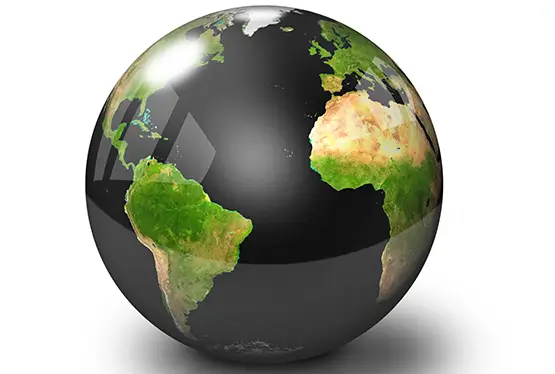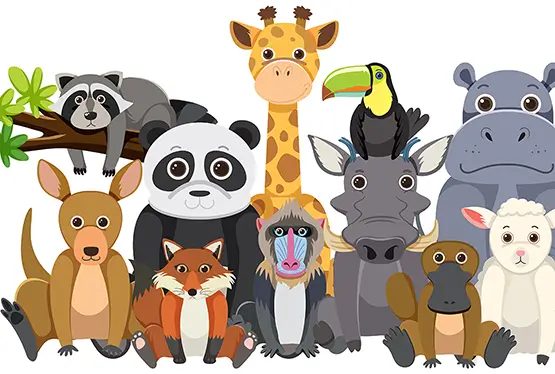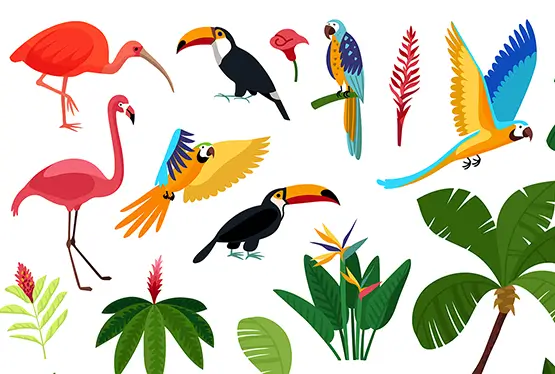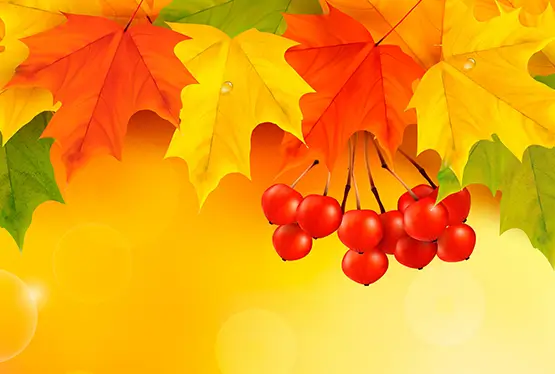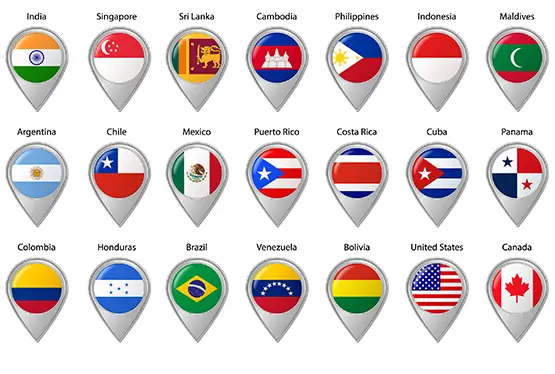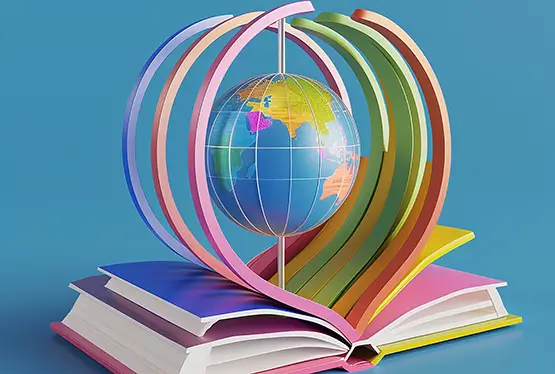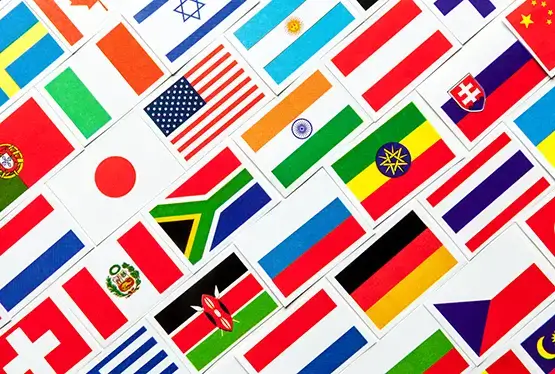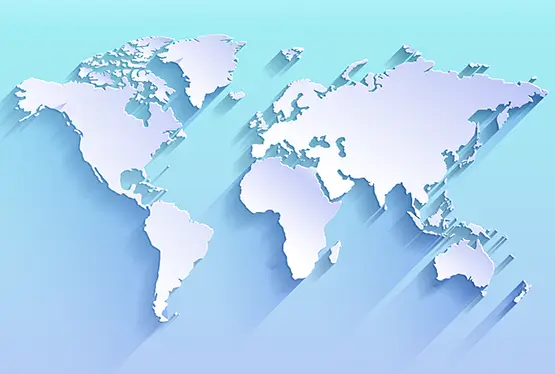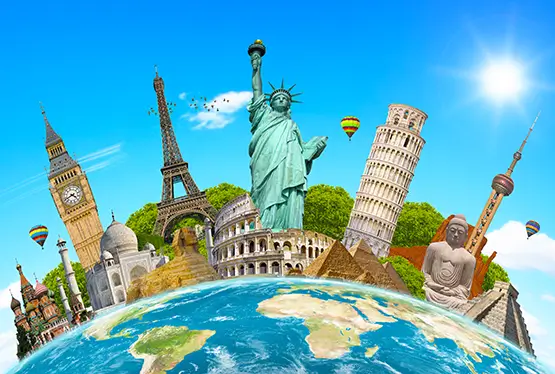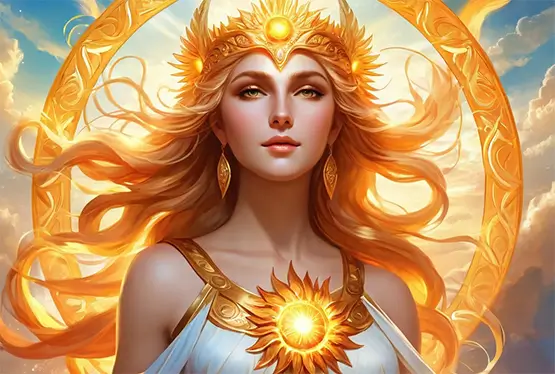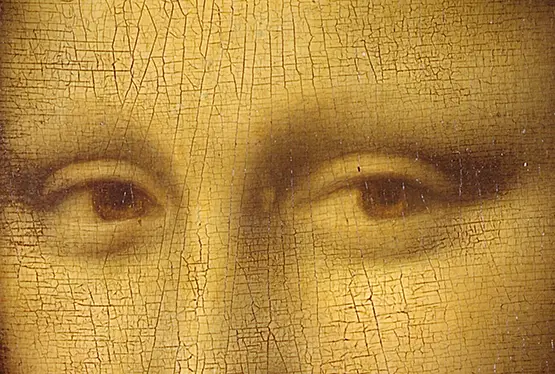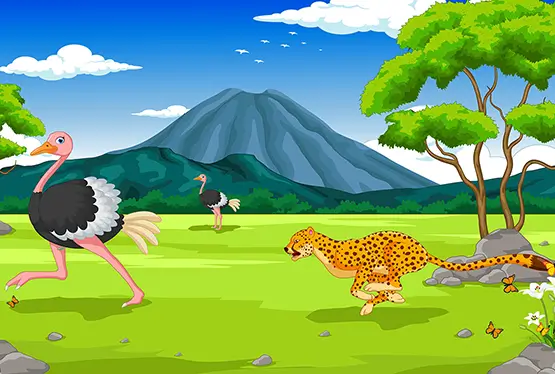World Countries
Earth - Our planet
World - 2025 |
|
| Population: | 8.2 billion |
| Median age: | 31 years |
| Av. life expectancy: | 73 years |
| Nations: | 195 |
| Global GDP: | $110 trillion |
| World Flags | World Maps | World Records |
Introduction: The Living Tapestry of Earth
Beneath the infinite canvas of the cosmos, a singular masterpiece unfurls—a jewel cradled in the void, aglow with the iridescence of life. This is Earth, our home, where oceans breathe mist into the skies, where mountains stand as sentinels of time, and where every creature, from the tiniest plankton to humankind, weaves its thread into the grand tapestry of existence. To tell the story of Earth is to tell the story of life itself, a narrative as ancient as the stars and as dynamic as the rivers that carve its landscapes.
Imagine, if you will, a planet where 71% of its surface dances in shades of sapphire and aquamarine, its waters brimming with mysteries deeper than any man has ventured. Above, an atmosphere, delicate yet tenacious, enfolds this world in a life-sustaining embrace. And within, the molten heart of Earth churns with primordial energy, shaping mountains, fueling eruptions, and guiding the continents in an eternal waltz upon tectonic plates.
But Earth is more than its physical form. It is a symphony of interconnections—a place where the cry of an eagle echoes through canyons sculpted by ancient rivers, where coral reefs pulse with the hues of life beneath azure waves, and where deserts bloom with resilience in the harshest sun. It is a cradle of civilizations, a stage for epic journeys, and a muse for poets and dreamers.
For millennia, humankind has gazed upon this sphere with wonder. Philosophers contemplated its mysteries, explorers charted its coasts, and scientists unveiled its secrets. Yet, even now, its depths and skies conceal stories yet untold, a reminder that Earth’s essence is as enigmatic as it is familiar.
Chapter 1: Earth in Space
Suspended in the boundless void of the cosmos, Earth charts an elegant dance around a blazing star. This is no ordinary waltz; it is a celestial symphony played out over eons, where gravitation acts as the maestro and the Sun as the brilliant, unrelenting source of light and energy. Our planet, the third in line from this life-giving star, is a masterpiece of balance and precision—a harmonious oasis in a universe of extremes.
As Earth journeys through the heavens, it carries with it the legacy of billions of years of cosmic evolution. The very ground beneath our feet is a testament to the immense forces of creation—a remnant of the solar nebula, a swirling cloud of gas and dust that gave birth to the Sun and its planetary companions. Born of fire and tempered by time, Earth is a crucible of life, cradling oceans, mountains, and skies in its tender embrace.
Tilted upon its axis, our world gifts us the changing seasons, an ever-shifting tableau painted in hues of spring’s blossoms, summer’s golden rays, autumn’s fiery leaves, and winter’s crystalline frost. This 23.5-degree inclination, a slight yet profound tilt, ensures that no corner of the globe is forever shrouded in shadow nor endlessly bathed in light. It is a delicate balancing act that brings forth the rhythm of life as we know it.
Beyond its axial tilt, Earth’s orbit is a marvel of precision—a nearly circular path that places it within the Sun’s habitable zone. This fortuitous positioning allows liquid water to flow freely, nurturing the intricate web of life. Unlike the scorching deserts of Venus or the frozen wastelands of Mars, Earth exists in a golden realm of moderation, a testament to the delicate forces that govern our place in the cosmos.
And yet, our journey through space is not solitary. The Moon, a steadfast companion, orbits Earth in an eternal ballet of gravitational interplay. Its pale light graces our nights, its tides shape our seas, and its presence whispers tales of a cosmic collision in Earth’s infancy—a cataclysmic event that forged a bond lasting billions of years. Together, Earth and its Moon weave a story of interdependence and shared destiny, a testament to the unity of celestial mechanics.
Above us, the heavens stretch endlessly, a tapestry of stars scattered like diamonds on velvet. The Sun, our nearest star, commands this tableau with its blazing brilliance, its energy fueling every breath we take and every leaf that grows. Farther still lies the Milky Way, a spiral galaxy of unfathomable dimensions, within which our solar system humbly resides—a speck of light in a cosmic ocean.
Chapter 2: Geology and the Planet's Layers
Beneath our feet lies a world of secrets—a labyrinth of rock and metal that tells the story of Earth’s fiery birth and restless evolution. The ground we tread so casually is but the skin of a colossal sphere, its layers descending into mysteries as profound as the cosmos above. In this chapter, we delve into Earth’s anatomy, peeling back the layers to reveal the hidden marvels within.
The crust, Earth’s outermost shell, is a mosaic of continents and ocean basins—a canvas where life flourishes and history unfolds. Though it varies in thickness, from a mere 5 kilometers beneath the oceans to up to 70 kilometers under towering mountain ranges, the crust is a fragile veneer, floating atop the restless mantle. Here, tectonic plates drift and collide, shaping landscapes with their inexorable dance and birthing mountains, valleys, and rift zones.
Beneath the crust lies the mantle, a realm of scorching heat and immense pressure. This vast layer, stretching nearly 2,900 kilometers deep, is composed of solid rock that flows like a viscous liquid over geological timescales. It is in this churning crucible that Earth’s internal heat, born of radioactive decay and primordial fire, fuels the tectonic movements above. Plumes of molten rock rise from the depths, creating volcanic islands and renewing the crust in a cycle as old as time.
At the mantle’s base, we encounter the core, a realm of unimaginable intensity where iron and nickel reign supreme. The outer core, a swirling sea of molten metal, generates Earth’s magnetic field—a shield that protects the planet from solar winds and cosmic radiation. This invisible armor has guarded life for billions of years, its ethereal lines shaping the auroras that dance in polar skies.
At the very heart of Earth lies the inner core, a solid sphere of iron and nickel, compressed to astonishing densities by the weight of the planet above. Here, temperatures rival those of the Sun’s surface, and yet the inner core remains steadfast, its solidity a paradox in a world of molten fury. Recent discoveries suggest that this inner sanctum may rotate slightly faster than the layers above—a dynamic heart beating in rhythm with the planet’s soul.
Together, these layers form a system of breathtaking complexity, each influencing the other in an intricate dance of heat, pressure, and motion. From the shifting tectonic plates that reshape the surface to the magnetic field that safeguards life, Earth’s layers are both the foundation and the engine of our world. They remind us that beneath the apparent stillness of the ground, our planet is alive—restless, dynamic, and brimming with the forces of creation.
As we journey through this geological marvel, we uncover not just the structure of our planet, but the story of its formation, its evolution, and its ceaseless transformation. For in the depths of Earth’s layers lies the key to understanding the forces that shape our world and sustain the delicate balance of life.
Chapter 3: The Hydrosphere
Water, the elixir of life, flows like a silver thread through the tapestry of Earth, connecting every corner of the planet in a ceaseless dance of renewal and transformation. It is the hydrosphere—a world within a world—where oceans, rivers, lakes, and glaciers breathe life into an otherwise fragile sphere. To explore the hydrosphere is to embark on a journey through Earth’s veins, where liquid vitality nurtures all that exists.
The oceans, vast and enigmatic, cover more than two-thirds of Earth’s surface, their depths holding mysteries as profound as the stars. They are the lungs of the planet, exhaling oxygen and inhaling carbon, their tides a symphony conducted by the Moon’s gentle pull. Within their embrace lie coral reefs bursting with color, deep trenches that plunge into darkness, and currents that weave together the climates of continents far apart.
From these mighty oceans arise rivers, those wandering poets of the land, carving their verses into the earth as they journey from snow-capped peaks to sunlit seas. The Amazon, the Nile, the Yangtze—each river is a lifeline, nourishing ecosystems, sustaining civilizations, and etching the story of humanity into their flowing waters. Their tributaries and streams form a delicate lattice, a reminder of water’s omnipresence and its power to shape landscapes over millennia.
High above, the hydrosphere takes flight, transformed into vapor that dances across the sky in ethereal clouds. These airborne rivers carry rain to parched lands, snow to sleeping forests, and dew to awaken the petals of dawn. Through the hydrologic cycle, water traverses boundaries, shifting seamlessly from liquid to vapor to solid, a celestial alchemy that sustains all life.
Locked within glaciers and polar ice caps lies another world—frozen kingdoms that guard ancient secrets. These icy sentinels, covering over ten percent of Earth’s surface, hold the planet’s memory, their layers preserving a record of climate epochs long past. Yet, as the world warms, these bastions of frost release their grip, their melting waters joining the oceans in a silent plea for balance.
Lakes, tranquil and introspective, dot the land like jewels scattered across a canvas. Each lake, from the vastness of Lake Baikal to the shimmering expanse of the Great Lakes, is a microcosm of life—a mirror reflecting the sky, a haven for myriad species, and a wellspring for human sustenance and imagination.
Beneath the surface, unseen and often forgotten, lies groundwater—an underground reservoir cradling more water than all the rivers and lakes combined. This hidden wealth, seeping through rock and soil, nourishes crops, quenches cities, and sustains ecosystems in ways both profound and invisible. It is the silent guardian of the hydrosphere, its presence a reminder of nature’s quiet resilience.
The hydrosphere is not merely a physical entity but a symbol of life’s continuity and interconnection. It binds ecosystems, cultures, and histories, its flows and ebbs a reflection of the planet’s pulse. As you gaze upon a tranquil lake, hear the rush of a waterfall, or marvel at the crashing waves of an ocean, remember that these waters are ancient, eternal, and essential—a source of wonder and a force of creation.
Chapter 4: The Atmosphere
Encircling Earth like a celestial veil, the atmosphere is the breath of life, an ethereal realm where the dance of light and air weaves a story as old as the planet itself. This invisible shield is a masterpiece of nature, a delicate composition of gases that cradle life in its embrace, protecting, nurturing, and connecting all living things. To journey through the atmosphere is to ascend through layers of wonder, each one a chapter in the saga of Earth’s vitality.
At its base lies the troposphere, a bustling domain where clouds gather in billowing formations, where storms unleash their thunderous symphony, and where the air is rich with the breath of forests and the whispers of seas. This lowest layer, stretching a mere 16 kilometers above the surface, is the cradle of weather, the theater where wind and water vapor perform their timeless interplay, shaping climates and sculpting landscapes.
Rising above the troposphere, the stratosphere unveils a tranquil expanse, home to the ozone layer—a guardian that shields Earth from the Sun’s ferocious ultraviolet rays. Here, the air is rarer, the winds steadier, and the serenity profound. The stratosphere is a realm of flight, where the wings of high-altitude planes trace elegant arcs, and where the ozone weaves a protective tapestry that ensures life’s flourish below.
Beyond the calm of the stratosphere lies the mesosphere, a realm of mystery where meteors meet their fiery demise, painting the night sky with fleeting streaks of brilliance. It is here, at altitudes where the air grows thin and cold, that the atmosphere whispers of its limits, a gateway to the heights where Earth’s influence begins to wane.
Ascend further, and you reach the thermosphere, a domain of extremes where temperatures soar and the auroras dance in luminous splendor. Charged particles from the Sun collide with Earth’s magnetic field, igniting the heavens in curtains of green, red, and violet light—a cosmic ballet that has inspired awe for millennia. Here, the International Space Station orbits, a symbol of humanity’s quest to explore the frontier where Earth meets the cosmos.
At the outermost edge, the exosphere fades into the vastness of space, where Earth’s atmosphere whispers its final goodbye. This tenuous region, where particles drift toward the infinite, is both a boundary and a bridge—a place where Earth’s presence dissolves into the cosmic sea.
Yet, the atmosphere is more than layers of gas; it is the pulse of the planet, a dynamic force that shapes life and sustains balance. It carries the scent of blooming flowers, the salt of the sea, and the cool breath of mountains. It amplifies the warmth of the Sun and softens the chill of night. It is the medium through which birds soar, seeds travel, and sounds resonate, binding the world in an unseen, unyielding embrace.
As we gaze upward, let us remember that the atmosphere is both fragile and fierce—a reminder of Earth’s resilience and vulnerability. It is a realm of wonder and warning, urging us to cherish and protect this invisible miracle that envelops us. For in its depths and heights lies the story of a planet alive, a world bound by air and filled with possibility.
Chapter 5: The Biosphere
The biosphere, a living mosaic draped across Earth’s surface, is the planet’s beating heart and boundless soul. Here, life thrives in forms as diverse as the cosmos itself, weaving an intricate web that connects every creature, every leaf, and every grain of soil. It is a realm where the ordinary transforms into the extraordinary, where survival is an art, and where the beauty of existence unfolds in a million shades of wonder.
Stretching from the depths of the ocean’s abyssal plains to the peaks of the highest mountains, the biosphere cradles life in every conceivable niche. It is the coral reef, a city of color and light where fish dart through labyrinthine gardens of living stone. It is the rainforest, a cathedral of green where sunlight filters through a canopy that hums with the symphony of countless species. It is the tundra, where lichens cling to frozen ground and life whispers against the biting wind.
Beneath the surface, the biosphere delves into unseen worlds. In the soil, an underground metropolis of roots and microbes works tirelessly to sustain the plants that feed and shelter the living. Deep within the Earth’s crust, life exists against all odds, thriving in darkness, feeding on minerals and heat, and defying every assumption about what it means to be alive.
The oceans, covering more than 70% of Earth’s surface, form the largest part of this living sphere. From the sunlit shallows to the inky depths, marine life pulses with a vitality that defies comprehension. Here, whales sing their haunting melodies, kelp forests sway in unseen currents, and bioluminescent creatures paint the darkness with their ethereal glow.
In the skies, the biosphere takes flight. Birds soar on thermals, their wings tracing arcs of grace. Pollinators flit from flower to flower, carrying the promise of renewal. The air itself becomes a conduit for life, dispersing seeds and carrying whispers of seasons changing.
Yet, the biosphere is not merely a collection of organisms; it is a system of profound interconnection. Each species, no matter how small, plays its role in the grand orchestra of existence. The predator shapes the prey, the flower beckons the bee, and the fallen tree nourishes the soil for the sapling to rise. It is a circle without beginning or end, a balance as delicate as the wings of a butterfly.
But this balance is fragile, threatened by the very beings who have the most to lose. Humanity, with its ingenuity and ambition, has become both a part of and a force against the biosphere. As forests fall and waters warm, the biosphere bears the weight of our choices, adapting and enduring even as it calls for stewardship and care.
The biosphere is Earth’s masterpiece, a testament to the power of life to flourish in the face of adversity and to create beauty in every corner of the globe. It reminds us of our place within this living system, not as masters, but as participants. As we marvel at its wonders, may we also recognize our responsibility to protect and preserve this delicate web, for in safeguarding the biosphere, we ensure the survival of all that it sustains—including ourselves.
Chapter 6: Earth's Geological History
Deep within the layers of Earth’s crust lies a chronicle etched in stone, an epic tale of fiery births, cataclysmic upheavals, and the slow, deliberate sculpting of landscapes over billions of years. This is the geological history of Earth—a story of transformation and endurance, written by the hands of time itself.
In the beginning, more than 4.6 billion years ago, Earth emerged from a swirling nebula of gas and dust, a molten sphere glowing with primordial heat. Bombarded by meteorites and seared by radioactive decay, the young planet was a churning cauldron of liquid rock. Over time, as its surface cooled, a fragile crust began to form—a tenuous shell over a still-roiling interior. This crust would bear witness to the birth of continents, the formation of oceans, and the emergence of life itself.
The Archean Eon, a time of shadow and mystery, saw Earth’s first continents rise from the depths of a global ocean. Beneath skies veiled in volcanic haze, the earliest life forms—simple, single-celled organisms—took hold. These pioneers, invisible yet powerful, transformed the atmosphere by releasing oxygen, sowing the seeds for the complex ecosystems that would follow.
With the dawn of the Proterozoic Eon, Earth entered an age of sweeping change. Supercontinents drifted across the globe, assembling and breaking apart in a slow, majestic dance. The first multicellular life appeared, and the planet experienced its first ice ages, when glaciers stretched their icy fingers across the land. It was a world both fragile and resilient, adapting and evolving in the face of constant transformation.
Then came the Cambrian Explosion—a burst of creativity that gave rise to an astonishing diversity of life. During the Paleozoic Era, ancient seas teemed with trilobites, brachiopods, and the first vertebrates, while lush forests of towering ferns and giant insects dominated the land. The supercontinent Pangaea united the world’s landmasses, only to fracture again, setting the stage for the continents we know today.
The Mesozoic Era, the Age of Reptiles, unfolded like a drama of grandeur and ferocity. Dinosaurs roamed the Earth, their colossal forms casting long shadows over a landscape rich with conifers and flowering plants. But even their reign was not eternal. Sixty-five million years ago, a fiery asteroid collided with Earth, bringing darkness and extinction. From this devastation rose a new chapter—the Cenozoic Era, the Age of Mammals.
The Cenozoic Era saw the continents settle into their familiar shapes, the rise of mountain ranges like the Himalayas, and the spread of grasses that transformed ecosystems. It was during this era that humanity’s story began, a mere blink in the geological timeline. From humble beginnings, Homo sapiens rose to shape the world in ways no other species had, their footprints leaving indelible marks on the Earth’s surface.
Today, the geological history of Earth continues to unfold, a narrative of dynamic forces and relentless change. Mountains rise and erode, oceans expand and contract, and the planet’s crust shifts in a perpetual dance of creation and destruction. Each moment is a chapter in the ongoing epic, a reminder of Earth’s enduring spirit and its capacity for renewal.
As we stand on this ancient and ever-changing ground, let us honor the story beneath our feet. For in every rock and every grain of sand lies a fragment of Earth’s memory—a testament to the power of time and the resilience of a planet forged in fire, sculpted by water, and enriched by life.
Chapter 7: The Evolution of Life
Life, that most enigmatic of miracles, began as a whisper upon the canvas of Earth’s infancy. From the primordial depths, where volcanic fury met the cooling embrace of the oceans, a spark ignited—a simple molecule, endowed with the audacity to replicate, to change, to persist. Thus commenced the great odyssey of evolution, an unbroken chain of existence stretching across eons, shaping the tapestry of life we marvel at today.
In the shadowy realms of the Archean Eon, Earth’s first inhabitants emerged: single-celled organisms, ancient architects of life. Among them were cyanobacteria, their modest forms betraying a profound power. Through photosynthesis, these humble beings transformed Earth’s atmosphere, breathing oxygen into the air and crafting the foundation upon which all complex life would stand. The oxygen revolution was a silent upheaval, a gift from the unseen to the yet-to-come.
Time marched forward into the Proterozoic Eon, and life embraced complexity. The first eukaryotic cells, with their enigmatic nuclei, marked the dawn of a new age. In the seas, multicellular organisms began their slow dance, their forms coalescing into rudimentary structures—a prelude to the symphony of biodiversity that lay ahead. By the close of this era, life’s palette had expanded, its brushstrokes painting the oceans with strange and wondrous shapes.
Then came the Cambrian Explosion, an era of unparalleled creativity. In the shallow, sunlit seas, evolution’s hand worked swiftly, sculpting creatures of astounding variety. Trilobites scuttled across the seafloor, their armored bodies gleaming like ancient jewels. Brachiopods anchored themselves to the substrate, their shells opening and closing in a rhythmic ballet. Predators, equipped with newly minted claws and teeth, prowled these waters—a testament to life’s unyielding drive to adapt and survive.
As the Paleozoic Era unfolded, the first vertebrates ventured into these waters, their skeletal frameworks heralding a new level of complexity. Plants, too, made their bold ascent, colonizing the land with the tenacity of pioneers. In their wake followed insects, amphibians, and eventually reptiles, each step an evolutionary triumph, each species a testament to life’s relentless ingenuity.
But evolution’s path is seldom linear. It is marked by extinctions as much as by creations, by catastrophic ends that pave the way for new beginnings. The Permian extinction, the most devastating of all, silenced nearly 90% of Earth’s species. Yet from this void, the Mesozoic Era arose, the Age of Reptiles, dominated by the mighty dinosaurs. For millions of years, these colossal beings roamed the Earth, their dominance unmatched, their shadows long.
And then, in an instant, the reign of the dinosaurs ended, extinguished by a fiery asteroid’s wrath. The Cenozoic Era dawned, and with it came the rise of mammals. Small and unassuming at first, they flourished in the absence of their reptilian rivals. Forests teemed with life, grasslands stretched toward the horizon, and the first primates swung from the trees—a quiet prelude to humanity’s arrival.
Humanity, the youngest player in this grand saga, emerged from the cradle of Africa. With each step, Homo sapiens forged a connection with the natural world, a bond both nurturing and exploitative. We harnessed fire, shaped tools, built civilizations, and gazed upward, seeking answers among the stars. Yet, amidst our triumphs, we carry a responsibility—to honor the evolutionary journey that birthed us and to protect the delicate web of life from which we arose.
The evolution of life is a tale of resilience, of endless experimentation and profound interconnectedness. From the humblest microbe to the towering redwoods, from the fleeting beauty of a butterfly to the enduring majesty of whales, life’s story is one of wonder and tenacity. As we tread this Earth, let us remember that we are but one chapter in a book still being written—a book whose pages whisper of a world both ancient and alive.
Chapter 8: The Dawn of Civilization
As the first rays of human ingenuity pierced the veil of prehistory, the world awakened to the hum of civilization. No longer content to wander as nomads, humankind planted its roots in the fertile soils of the Earth, transforming wild landscapes into cradles of culture and innovation. The dawn of civilization was not a single moment but a symphony of progress, a convergence of minds and hands that sculpted the foundations of modern society.
It began in the lush valleys of rivers—the Tigris and Euphrates, the Nile, the Indus, and the Yellow River—where waters carried life to parched lands and inspired the birth of agriculture. The tilling of soil and sowing of seeds marked the first steps away from the uncertainty of foraging toward the stability of harvests. With grain-filled granaries and the rhythms of planting and reaping, humanity forged a bond with the land that would shape its destiny.
Villages grew into cities, their walls rising like sentinels against the wilderness. In Mesopotamia, the ziggurats of Ur reached skyward, their terraces adorned with offerings to gods who watched over the burgeoning cities. The Nile bore witness to the grandeur of pyramids, eternal monuments to the ambition and faith of a people who sought to bridge the mortal and the divine. In the Indus Valley, meticulously planned cities like Mohenjo-Daro spoke of an unparalleled order, their streets and baths a testament to an early grasp of urban sophistication.
Alongside architecture blossomed art, language, and law—the intangible threads that wove disparate communities into unified cultures. Symbols etched into clay tablets and carved into stone evolved into scripts that chronicled the triumphs and tribulations of kings and commoners alike. The Code of Hammurabi, with its chiseled decrees, declared justice and order in the chaos of human existence, a beacon of structure amidst the swirling currents of change.
Trade routes stretched like arteries across continents, carrying not only goods but ideas. Spices from distant lands, precious metals, and textiles flowed through bustling markets, igniting curiosity and fostering exchange. The Silk Road, a sprawling network of paths, linked the East and West, uniting empires and sowing the seeds of globalization long before the term was conceived.
Yet, the dawn of civilization was not without shadows. Conflicts brewed as resources were contested, and empires clashed for dominance. The beauty of innovation coexisted with the brutality of conquest, as humanity grappled with the dualities of creation and destruction, unity and division, progress and peril.
From these early societies emerged the cornerstones of culture and identity. Philosophy blossomed in Athens, where thinkers like Socrates and Plato pondered the nature of existence. In India, the Vedas sang of cosmic order and spiritual truth, while in China, Confucius laid the groundwork for harmony and governance. These civilizations, though separated by distance and language, shared a common thread—the pursuit of meaning and the desire to leave a legacy.
The dawn of civilization was not merely the beginning of cities and empires; it was the awakening of humanity’s collective spirit. It was a time when the wild became the cultivated, when dreams were etched into stone, and when the seeds of today’s world were sown. As we reflect on this epoch, we glimpse the resilience and creativity that define our species—a legacy carved into the very fabric of the Earth.
Chapter 9: World Cultures and Heritage
The world is a kaleidoscope of cultures, each a shimmering fragment in the grand mosaic of humanity. These cultures, born of time and place, speak to the soul of their people, whispering stories of ancestry, survival, and transcendence. From the rhythmic drumbeats of Africa to the haunting chants of the Arctic, from the intricate patterns of Persian rugs to the bold strokes of Japanese ink paintings, the diversity of human expression is as vast as the horizons that stretch across the Earth.
At the heart of every culture lies its heritage—a treasury of traditions, beliefs, and practices handed down through generations like sacred heirlooms. These are the echoes of ancestors, the bridges between past and present, and the seeds from which future blossoms. Heritage is carved into the stones of the Great Wall of China, woven into the silk of Indian saris, and sung in the lullabies of the Andes. It is the intangible spirit of humanity, preserved in rituals and celebrations that bind communities together.
Across the globe, cultures have evolved in response to their environments, creating an astonishing array of lifestyles and worldviews. In the arid sands of the Sahara, the Tuareg people traverse endless dunes, their indigo robes a striking contrast to the golden expanse. In the lush rainforests of the Amazon, indigenous tribes live in harmony with nature, their knowledge of flora and fauna unrivaled. On the snowy steppes of Siberia, the nomadic Nenets herd reindeer, their lives intertwined with the rhythms of the tundra.
Language, the lifeblood of culture, carries the essence of a people’s identity. Each word, phrase, and proverb reflects the unique way a community perceives the world. In the lilting cadences of Italian, the stoic tones of Finnish, or the melodic rise and fall of Swahili, languages hold the keys to understanding the thoughts and dreams of their speakers. Yet, languages also bear the weight of vulnerability, with countless tongues teetering on the brink of extinction, their loss a silent erasure of cultural memory.
Festivals and celebrations are the living pulse of cultures, vibrant expressions of joy, faith, and solidarity. In Rio de Janeiro, Carnival bursts forth in a riot of color and music, a testament to Brazil’s spirited heart. In Kyoto, the Gion Matsuri honors centuries-old traditions with processions that light up the summer nights. In India, the festival of Diwali illuminates homes and hearts with its radiant lamps, symbolizing the triumph of light over darkness.
Yet, the story of world cultures is not solely one of beauty and resilience. It is also a tale of struggles against erasure, of battles fought to preserve heritage in the face of colonization, globalization, and modernity. Indigenous peoples, their histories often written in the margins, rise to reclaim their narratives, to ensure that their dances, songs, and stories endure. Their voices remind the world that culture is not static but alive, adapting and evolving while retaining its core essence.
In the landscapes of UNESCO World Heritage Sites, the legacy of human achievement and natural beauty intertwines. From the ancient city of Petra, carved into rose-red cliffs, to the serene temples of Kyoto, to the sprawling Serengeti plains where wildebeest migrations echo the rhythms of life, these sites stand as testaments to the cultural and natural wealth of the world. They are not merely monuments but bridges across time, connecting us to our shared heritage.
As we explore the world’s cultures and heritage, we embark on a journey of connection and empathy. We learn that beneath the myriad differences lies a shared humanity, a collective yearning to create, to belong, and to endure. Let us cherish this rich diversity, for in celebrating the uniqueness of others, we discover the boundless possibilities of our own world.
Chapter 10: World Religions
Across the annals of time, humanity has gazed at the heavens and pondered the mysteries of existence. What lies beyond the stars? What purpose does life serve? In this eternal quest for meaning, religions have emerged—beacons of faith, repositories of wisdom, and bridges to the divine. From the chanting monks of Tibet to the rhythmic prayers of the Sahara, world religions form a sacred thread that binds the hearts of billions.
At their core, religions are the stories of humanity’s relationship with the cosmos. In the verdant lands of the Indus Valley, Hinduism took root, weaving tales of gods and goddesses, of karma and dharma, of cycles unending. Here, the sacred river Ganges flows like a silver lifeline, its waters revered as a conduit to the eternal. It is a faith of vibrant rituals, ancient temples, and the profound whisper of the Upanishads, which echo truths as old as the stars.
Meanwhile, in the arid expanses of the Middle East, Abrahamic religions ignited the spiritual imagination of the world. Judaism, the faith of a chosen people, is etched in the Torah’s sacred scrolls, a testament to resilience and covenant. Christianity, with its message of love and redemption, spread like wildfire from the Roman Empire to the furthest reaches of the Earth, its cathedrals rising as monuments to faith. And Islam, born from the deserts of Arabia, calls its followers to prayer with the lyrical beauty of the Quran, uniting a billion souls under the banner of peace and submission.
In the serene landscapes of Asia, Buddhism and Taoism emerged, offering paths of harmony and enlightenment. Siddhartha Gautama, the Buddha, renounced his princely life to seek liberation from suffering. His teachings, encapsulated in the Four Noble Truths, illuminate a journey toward inner peace and the cessation of desire. Taoism, meanwhile, embraces the flow of the universe, its tenets guiding adherents to live in harmony with the Tao—the way of nature, eternal and unchanging.
Across Africa and the Americas, indigenous spiritualities honor the Earth as sacred. Here, the drumbeat is a heartbeat, the smoke of sage a prayer. The natural world is not a resource to be consumed but a partner in existence, imbued with spirits and energies that connect all living things. These ancient traditions, carried through oral histories and sacred ceremonies, are a testament to the depth of humanity’s reverence for the planet.
Beyond their rituals and doctrines, religions are profound forces of community and identity. They inspire art and architecture—the gilded domes of mosques, the intricate carvings of Hindu temples, the serene statues of the Buddha. They forge bonds among people, uniting them in shared beliefs and celebrations. Yet, they also challenge us to confront our differences, to seek understanding in a world shaped by diversity.
But religion is not static; it is a living, breathing entity, adapting to the rhythms of modernity. In an era of globalization and interconnectedness, faith journeys across borders, mingling and evolving. Interfaith dialogues arise, creating bridges where once there were divides. In the glow of candles and the hum of meditations, humanity finds solace, purpose, and the enduring hope of unity.
The story of world religions is the story of humanity’s spirit—its triumphs, its struggles, its infinite yearning for the divine. As we delve into their rich histories and sacred texts, we uncover not just the essence of faith but the soul of our shared humanity. For in the myriad expressions of belief lies a universal truth: the search for meaning binds us all, a testament to the wonder and mystery of existence.
Chapter 11: The Languages of the World
In the symphony of humanity, languages are the notes that compose our collective song. Each tongue, from the rolling cadence of Arabic to the lilting melody of Italian, carries the soul of its speakers, weaving stories that transcend time and place. To explore the languages of the world is to embark on a journey through the labyrinth of human thought, where words are the threads that bind cultures, memories, and dreams.
The tapestry of languages is dazzling in its diversity, with over 7,000 spoken tongues echoing across the globe. In the dense forests of Papua New Guinea, where verdant canopies kiss the sky, more than 800 languages thrive, each one a unique key to understanding the land and its people. In contrast, Mandarin Chinese, with its intricate tones and elegant characters, unites over a billion voices, flowing like a mighty river through the heart of Asia.
Language is more than a means of communication; it is a vessel of identity and culture. The Gaelic spoken in Ireland carries the weight of ancient myths and heroic sagas. Swahili, with its rhythmic syllables, echoes the trade winds that once carried dhows across the Indian Ocean. And in the frozen expanses of the Arctic, the Inuktitut language offers a thousand words for snow, painting vivid pictures of a world shaped by ice.
Yet, the story of languages is also a tale of impermanence. Thousands of tongues are endangered, their speakers dwindling, their words fading into silence. Each lost language is a library set aflame, its wisdom and nuance scattered to the winds. Efforts to preserve these treasures—through documentation, teaching, and revitalization—are acts of defiance against the tides of time, ensuring that the voices of the past echo into the future.
Language is a mirror to the mind, revealing the ways in which we perceive the world. In Japanese, the concept of wabi-sabi celebrates the beauty of imperfection, while the untranslatable German word Fernweh expresses a deep longing for distant places. Each language offers a lens through which to view reality, enriching our understanding of life’s myriad complexities.
The written word, too, is a marvel of human ingenuity. From the cuneiform tablets of ancient Mesopotamia to the illuminated manuscripts of medieval Europe, writing has immortalized the thoughts of countless generations. Alphabets, logograms, and syllabaries—each system is a testament to humanity’s quest to capture the intangible, to give form to ideas that transcend the fleeting moment.
In today’s interconnected world, languages converge and evolve with breathtaking speed. English, a patchwork of Germanic roots and Romance influences, serves as a global lingua franca, connecting disparate cultures with its versatile embrace. Yet, amidst the rise of dominant tongues, regional dialects and indigenous languages hold their ground, stubbornly vibrant in the face of homogenization.
The languages of the world are not merely tools; they are living, breathing entities, shaped by and shaping the people who speak them. They carry laughter and sorrow, wisdom and folly, history and hope. As we listen to the voices of the world, let us honor their diversity and celebrate the boundless creativity of human expression. For in every word, there is a story, and in every story, a piece of the human spirit.
Chapter 12: The World of Literature
In the quiet company of pages and ink, the human spirit takes flight, transcending time and space to explore realms both real and imagined. Literature is the immortal voice of humanity, a vessel for our dreams, our fears, our joys, and our sorrows. It is the art of storytelling, the alchemy of words, transforming thoughts into timeless treasures that resonate across the ages.
From the ancient epics that echo with the footsteps of gods to the poignant soliloquies of modern novels, literature is a mirror that reflects the breadth of human experience. In Mesopotamia, the Epic of Gilgamesh chronicles a hero’s quest for immortality, its verses etched into clay tablets that whisper of humanity’s earliest tales. The Indian subcontinent gave rise to the majestic Mahabharata and Ramayana, sweeping narratives that weave together duty, love, and cosmic destiny.
Across the Mediterranean, the lyrical verses of Homer’s Iliad and Odyssey sang of heroism and homecoming, their words cascading like waves over centuries. In the Middle Ages, Chaucer’s The Canterbury Tales painted a vibrant portrait of English society, while the poetry of Rumi, spinning in the mystic dance of Sufism, illuminated the boundless nature of love and unity.
The Renaissance breathed new life into literature, a golden age of thought and creativity. Shakespeare, the Bard of Avon, penned plays and sonnets that captured the complexities of the human condition, from the tortured ambition of Macbeth to the star-crossed love of Romeo and Juliet. Cervantes’ Don Quixote tilted at windmills and explored the fine line between reality and imagination, setting the stage for the modern novel.
As the Enlightenment dawned, literature became a tool for reason and revolution. Voltaire, Rousseau, and Goethe wielded their pens as swords, challenging conventions and inspiring change. The Romantic era followed, a tempest of emotion and nature’s splendor, epitomized by the verses of Wordsworth, Shelley, and Keats. In America, Whitman’s Leaves of Grass sang the body electric, celebrating democracy and individuality.
The 19th century brought the novel into full bloom, its pages rich with social commentary and psychological depth. Tolstoy’s War and Peace and Dickens’ Great Expectations unveiled the grandeur and grit of human lives, while Austen’s novels wove delicate tapestries of love and class. The emergence of writers like Dostoevsky, Hugo, and the Brontë sisters expanded the literary horizon, offering profound insights into the human soul.
In the 20th century, modernism shattered traditional forms, forging new pathways of expression. Joyce’s Ulysses charted the depths of consciousness, while Kafka’s surreal landscapes captured the absurdity of existence. Postcolonial literature, from Achebe’s Things Fall Apart to Rushdie’s Midnight’s Children, gave voice to silenced histories, challenging the narratives of empire and identity.
Today, literature continues to evolve, embracing voices from every corner of the globe. From the speculative futures of science fiction to the raw truths of memoirs, the written word adapts to a rapidly changing world while retaining its timeless essence. It bridges cultures, fosters empathy, and ignites the imagination, reminding us that, despite our differences, we are all storytellers at heart.
The world of literature is boundless, a treasure trove of human creativity. As we turn its pages, we embark on journeys of discovery and reflection, guided by the words of those who came before us. Let us honor this legacy, for in every story lies the power to inspire, to heal, and to transform.
Chapter 13: World Art and Music
If literature is the voice of humanity, then art and music are its heartbeat, pulsing with the rhythm of life and resonating across time and space. These are the universal languages, unbound by words, that speak directly to the soul. From the first cave paintings to the symphonies that echo through grand halls, art and music embody the boundless creativity and profound emotion of the human spirit.
The story of art begins with hands and stone, with the primal urge to create. In the caves of Lascaux and Altamira, ancient artists adorned walls with images of bison and deer, capturing the essence of survival and reverence. These early masterpieces, painted in ochre and charcoal, were not merely depictions—they were invocations, a communion with the mysteries of existence.
As civilizations blossomed, so too did their artistic expressions. In Egypt, art soared to monumental heights, with hieroglyphs and sculptures immortalizing gods and pharaohs. In Greece, the sculptors of antiquity pursued an ideal of beauty and proportion, their marble statues imbued with lifelike grace. Meanwhile, the intricate mosaics of Byzantium shimmered with gold and glass, telling stories of faith and eternity.
The Renaissance marked a rebirth of artistic brilliance, a convergence of science, philosophy, and creativity. Leonardo da Vinci’s Mona Lisa smiled enigmatically, while Michelangelo’s Sistine Chapel ceiling reached toward the divine. These works were not mere representations but revelations, exploring the depths of human potential and the grandeur of the cosmos.
In parallel, the world of music unfolded like a symphony, its notes carried on the winds of time. The drums of Africa thundered with the pulse of life, while the sitar of India sang of devotion and longing. In Europe, the Baroque era birthed composers like Bach and Vivaldi, whose intricate melodies danced through cathedrals and palaces. The Classical and Romantic periods followed, giving rise to Mozart’s divine harmonies and Beethoven’s passionate crescendos.
Art and music evolved in tandem with humanity’s journey, reflecting the triumphs and tragedies of each era. The Impressionists, with their vibrant strokes, captured fleeting moments bathed in light. The surrealists delved into the subconscious, their canvases alive with dreams and enigmas. Jazz emerged in the streets of New Orleans, a genre that spoke of freedom and improvisation, while rock and roll electrified the world with its rebellious spirit.
Beyond galleries and concert halls, art and music are woven into the fabric of daily life. They exist in the patterns of a woven rug, the melody of a lullaby, the rhythm of a heartbeat. They are the graffiti that colors city walls, the folk songs passed down through generations, the dances that tell stories without words. Art and music are the collective memory of humanity, capturing moments of joy, grief, love, and wonder.
In the modern era, art and music transcend borders, bridging cultures and connecting people in unprecedented ways. Digital tools enable new forms of expression, while global platforms amplify diverse voices. From the abstract visions of contemporary painters to the global phenomenon of pop music, the creative spirit continues to flourish, adapting to the rhythms of an ever-changing world.
The world of art and music is a boundless expanse, a celebration of humanity’s ability to create beauty in the face of adversity. It reminds us that, no matter the era or the medium, the desire to express, to connect, and to inspire is universal. As we immerse ourselves in these timeless creations, we are reminded of the infinite potential of the human spirit and the enduring power of imagination.
Chapter 14: Natural Landscapes
The Earth, sculpted by time and elements, is a masterpiece of natural beauty. Its landscapes, diverse and breathtaking, stand as silent witnesses to the planet’s ever-changing story. From towering peaks that pierce the heavens to vast deserts that shimmer beneath a blazing sun, the natural world is a theater of grandeur and wonder, each scene more magnificent than the last.
Among these wonders are the majestic mountains, their craggy peaks kissed by the clouds. The Himalayas, crowned by Mount Everest, rise like titans, their snow-clad summits gleaming in the sunlight. In the Andes, the jagged spires of Patagonia seem to defy gravity, while the Alps and Rockies weave through continents, offering a serene yet commanding presence. These mountains are more than mere elevations; they are the Earth’s spines, shaped by tectonic forces and adorned with glaciers that hold the secrets of ages past.
Contrasting the peaks are the deserts, where the silence is profound and the horizon infinite. The Sahara stretches like a golden ocean, its dunes shifting with the whims of the wind. In Australia, the vast Outback pulses with ancient energy, its red sands bearing the footprints of Aboriginal ancestors. The Atacama, the driest place on Earth, blooms with fragile flowers when rain graces its arid soil—a fleeting spectacle that reminds us of life’s resilience.
The forests, emerald lungs of the planet, teem with life and mystery. The Amazon, a verdant labyrinth, breathes moisture into the atmosphere, its rivers snaking through a realm of unparalleled biodiversity. The boreal forests of Siberia stand stoic in the face of winter’s embrace, their conifers whispering tales of endurance. In contrast, the tropical rainforests, alive with color and sound, are symphonies of existence, their canopies sheltering countless species.
Oceans, vast and unfathomable, cover over 70% of the Earth’s surface, their waves sculpting coastlines and nourishing life. The Great Barrier Reef dazzles with its kaleidoscope of corals, a testament to nature’s artistry. In the depths of the Pacific, trenches like the Mariana plunge into darkness, home to creatures that defy imagination. The seas are both cradles and graveyards, holding the stories of ancient mariners and the promise of future discoveries.
Valleys and plains spread like canvases, offering tranquil beauty and fertile grounds. The Grand Canyon, carved by the relentless Colorado River, reveals layers of Earth’s history in its rugged cliffs. The Serengeti’s golden savannas stretch endlessly, their grasses swaying in harmony with the migration of wildebeest and zebras. In Europe, the Rhine Valley is a poetic blend of natural splendor and human heritage, its slopes adorned with vineyards and castles.
Waterfalls, cascading with unbridled energy, captivate the soul. Niagara roars with power, its mist rising like a perpetual cloud. Angel Falls, the tallest of them all, plunges from the heart of Venezuela’s tepui mesas, a silver ribbon in a verdant wilderness. These torrents of water are the Earth’s veins, lifelines that connect mountains to oceans, sustaining ecosystems in their wake.
The polar regions, cloaked in ice and mystery, are realms of stark beauty. Antarctica’s glaciers calve into the Southern Ocean with thunderous grace, while the Arctic’s tundra, bathed in the ethereal glow of the auroras, is a fragile yet resilient frontier. These frozen landscapes, though remote, are vital to the planet’s equilibrium, their icy expanses a barometer of Earth’s changing climate.
As we journey through these natural landscapes, we are reminded of the Earth’s unparalleled artistry. Each mountain, forest, and ocean is a chapter in a story billions of years in the making. They inspire awe, humility, and a deep sense of responsibility to protect the planet’s treasures. For in their beauty lies a truth: the Earth is not merely our home; it is a masterpiece, and we are its stewards.
Chapter 15: Deserts, Forests, and Grasslands
The landscapes of Earth are a testament to the planet’s boundless creativity, each one a unique interplay of elements, shaped by time, and inhabited by life. Among them, deserts, forests, and grasslands stand as nature’s trinity, embodying the extremes and balances of existence. These ecosystems, though vastly different, are woven together by the threads of resilience, beauty, and an unyielding drive to thrive.
Deserts, the realms of silence and solitude, stretch endlessly beneath sun-scorched skies. The Sahara, a sea of golden dunes, shimmers with an almost mystical light, its vastness interrupted only by the whispering winds. The Gobi, austere and ancient, holds the secrets of millennia within its rocky expanse. In the American Southwest, the painted deserts bloom with bursts of color after rare rains, their flora and fauna defying all odds to survive. These arid lands, though harsh, are far from barren. They hum with the quiet determination of life—cacti standing sentinel, lizards darting across hot sands, and nomadic tribes weaving their lives into the desert’s rhythm.
In stark contrast to the deserts’ austerity, forests are verdant sanctuaries, teeming with life and mystery. The Amazon, the lungs of the Earth, pulses with the energy of countless species, its canopy a cathedral of green that filters sunlight into dappled patterns below. The ancient redwoods of California rise like natural skyscrapers, their silent grandeur speaking of centuries past. In the boreal forests of the north, conifers endure the bite of winter, their resilience mirrored by the creatures that call them home. Forests are the keepers of stories, their roots entwined with myths, their leaves whispering of seasons and cycles.
Grasslands, the Earth’s golden plains, are a study in simplicity and abundance. The Serengeti, with its vast savannas, is a stage for one of nature’s greatest spectacles: the migration of wildebeest and zebras in search of greener pastures. The American prairies, once roamed by thundering bison herds, stretch endlessly beneath wide skies. In the steppes of Central Asia, winds dance through grasses, their movements mirroring the nomadic journeys of those who inhabit them. Grasslands are places of connection, where the interplay of predator and prey, plant and soil, creates a harmony both fragile and profound.
These ecosystems, while distinct, share a common thread: the balance between life and its environment. In deserts, every drop of water is a treasure, every shadow a respite. In forests, the interplay of sunlight, rain, and soil creates a web of interdependence, each organism a vital part of the whole. In grasslands, the cycles of growth and grazing sustain a delicate equilibrium, each season a testament to nature’s rhythm.
Yet, these landscapes are not merely backdrops; they are active participants in the drama of life. Deserts teach us resilience, their beauty a reminder that even the harshest conditions can inspire. Forests invite us to breathe deeply, to listen to the rustle of leaves and the call of birds, to remember our connection to the natural world. Grasslands, with their open expanses, remind us of freedom and the endless possibilities of life.
As stewards of the Earth, it is our duty to honor and protect these landscapes. Deserts, forests, and grasslands are not merely ecosystems—they are living, breathing wonders, each one a chapter in the story of our planet. To walk among them is to witness the resilience of life, to feel the heartbeat of the Earth, and to understand that within their diversity lies the essence of our shared home.
Chapter 16: Oceans and Seas
The oceans, vast and unfathomable, are the cradle of life and the pulse of the planet. Covering more than 70% of Earth’s surface, they stretch to horizons unseen, their waves a perpetual rhythm that speaks of time eternal. Within their depths lie mysteries as profound as the stars, a world of beauty and wonder that has inspired poets, explorers, and dreamers alike. To gaze upon the ocean is to confront the infinite, to feel the heartbeat of a living planet.
At the heart of this aquatic expanse lies the Pacific Ocean, a realm so vast it could hold all the continents within its embrace. Its waters are both tranquil and tempestuous, a canvas painted with serene blues and stormy grays. Beneath its surface, the Mariana Trench plunges into the abyss, its depths home to creatures that defy imagination—bioluminescent beings that light the darkness with their ethereal glow.
To the west, the Indian Ocean whispers tales of monsoons and spice-laden ships. Its waters, warm and inviting, cradle coral reefs that burst with color and life. The Great Barrier Reef, the largest living structure on the planet, is a testament to nature’s artistry, a vibrant ecosystem that dazzles with its kaleidoscope of hues and teems with marine life both delicate and fierce.
The Atlantic Ocean, a bridge between continents, carries the currents of history. From its icy northern reaches, where icebergs drift like ghostly sentinels, to its warm tropical currents, it is a pathway of exploration and connection. The stories of ancient mariners, daring explorers, and voyages of discovery are etched into its waves, their legacy carried on every tide.
The Southern Ocean, encircling Antarctica, is a realm of extremes. Its icy waters churn with powerful currents that influence the climate of the entire planet. Here, glaciers calve into the sea with thunderous grace, and penguins gather in their resilient colonies, their lives intertwined with the rhythm of the frozen continent.
The Arctic Ocean, smallest and most enigmatic, lies cloaked in ice and mystery. Beneath its frozen surface, a delicate ecosystem thrives, a world of polar bears, seals, and narwhals, the unicorns of the sea. The Arctic’s icy waters are a poignant reminder of Earth’s fragility, a realm where change ripples outward, affecting every corner of the globe.
Seas, the oceans’ intimate companions, tell stories of their own. The Mediterranean, cradled by ancient civilizations, is a blue jewel of history and culture. The Caribbean, with its turquoise waters and sun-drenched isles, hums with life both above and below the waves. The South China Sea, a vital artery of commerce, carries the songs of its peoples and the whispers of its coral atolls.
Oceans and seas are more than bodies of water; they are the lifeblood of the planet, driving weather patterns, regulating temperatures, and sustaining countless forms of life. They are repositories of stories, from the ancient myths of Poseidon and Varuna to the modern marvels of deep-sea exploration. They remind us of our origins and our responsibilities, of the delicate balance that sustains our blue world.
As we stand on their shores, let us listen to their timeless song. For within their waves lies the wisdom of the ages, a call to explore, to protect, and to honor the oceans and seas that cradle our existence. They are the heart of Earth, eternal and ever-changing, a reminder that we are all connected by the water that flows through us and around us.
Chapter 17: Islands of the World
Scattered like precious gems across the vast oceans, islands are the Earth’s whispers of enchantment, their shores kissed by waves that have traveled the globe. Each island is a world unto itself, a realm where nature and culture intertwine to create something unique, something unforgettable. To journey to an island is to step into a dream, where the rhythm of life slows and the soul awakens to the splendor of the sea.
The islands of the Pacific, vast and uncharted, stretch across a tapestry of turquoise and sapphire. Hawaii, the land of fire and water, rises majestically from the ocean’s depths, its volcanic peaks cloaked in emerald forests. The Polynesian islands, home to navigators who read the stars and tides, are a testament to human resilience and ingenuity, their cultures thriving amidst boundless horizons.
In the Indian Ocean, the Maldives shimmer like a necklace of pearls, their coral atolls a sanctuary for marine life. Here, the water is a mirror of the heavens, reflecting skies of endless blue. Madagascar, the island of wonders, boasts a biodiversity found nowhere else on Earth—its baobab trees and lemurs a glimpse into nature’s infinite creativity.
The Caribbean, with its sun-drenched isles and vibrant cultures, is a mosaic of rhythm and color. From Jamaica’s reggae beats to Cuba’s salsa steps, these islands pulse with life. The beaches of the Bahamas, kissed by soft sands and gentle waves, are a haven of tranquility, while the rainforests of Dominica hum with the secrets of ancient flora and fauna.
Across the Atlantic, the British Isles tell stories of kings and castles, their cliffs standing resolute against the sea. Iceland, the land of fire and ice, is a realm of stark contrasts, where glaciers and geysers coexist in a landscape of otherworldly beauty. The Mediterranean islands, from the whitewashed villages of Santorini to the rugged coasts of Corsica, are drenched in sunlight and history, their shores echoing with the whispers of ancient civilizations.
In the Arctic and Antarctic, islands of ice and stone endure the harshest elements, their beauty raw and untamed. Greenland, vast and mysterious, is a land of towering glaciers and endless skies. The islands of the Southern Ocean, such as South Georgia, teem with life, their shores alive with the cries of penguins and the songs of the sea.
But islands are more than just geographic wonders; they are cultural treasures, their people weaving traditions that reflect both isolation and connection. From the haka of New Zealand’s Maori to the intricate tattoos of Polynesia, from the fiery dances of the Pacific to the serene rituals of Japanese tea ceremonies, islands are living testaments to humanity’s ability to adapt and thrive.
Islands inspire and enchant, offering a refuge from the pace of the mainland and a reminder of life’s simple pleasures. They are places of exploration and reverie, their shores inviting us to pause and listen to the whispers of the waves. To journey to an island is to discover not just a destination, but a state of being—a connection to the timeless rhythms of the sea and the enduring spirit of the Earth.
Chapter 18: The History of Exploration
From the moment humanity first gazed at the horizon, the spirit of exploration has burned brightly within us—a yearning to uncover the unknown, to chart the uncharted, and to dare where none have dared before. The history of exploration is a saga of courage and curiosity, a testament to the indomitable human spirit that refuses to be confined by boundaries, whether of land, sea, or sky.
It began with the earliest migrations, when our ancestors, driven by necessity and wonder, ventured out of Africa. Their journeys, etched into the very fabric of humanity, laid the foundations for civilizations as they followed rivers, crossed deserts, and scaled mountains. These primal explorers carved paths through wild lands, their footsteps shaping the destinies of continents.
Millennia later, the age of maritime exploration dawned, and the oceans became highways for human ambition. The Polynesians, guided by the stars and the whispers of the waves, crossed the vast Pacific in outrigger canoes, discovering islands scattered like jewels across the water. In the Mediterranean, the Phoenicians sailed boldly, their ships carrying the seeds of trade and culture to distant shores.
The 15th and 16th centuries marked the Age of Discovery, a time when Europe’s mariners embarked on epic voyages that redrew the maps of the world. Christopher Columbus, driven by visions of uncharted lands, crossed the Atlantic and opened the gateway to the Americas. Vasco da Gama rounded the Cape of Good Hope, linking Europe to the riches of India, while Ferdinand Magellan’s fleet circumnavigated the globe, proving the world’s roundness and its interconnectedness.
Yet, exploration was not confined to conquest and trade. The Enlightenment saw a surge in scientific voyages, where naturalists like Alexander von Humboldt and Charles Darwin ventured into rainforests, mountains, and islands to unravel the mysteries of life. Their discoveries transformed our understanding of the natural world, bridging the gap between curiosity and knowledge.
As the Industrial Revolution brought new technologies, humanity’s reach extended further still. The poles, once considered impenetrable, yielded to explorers like Roald Amundsen and Ernest Shackleton, who braved the frozen frontiers with unyielding determination. The peaks of the Himalayas, crowned by Everest, were conquered by mountaineers who touched the sky, their triumphs etched into the annals of history.
In the 20th century, the frontier of exploration shifted to the heavens. Yuri Gagarin’s pioneering journey into space and Neil Armstrong’s first steps on the Moon marked the dawn of a new age, where humanity reached beyond Earth to touch the stars. These celestial explorers carried the dreams of generations, their voyages a testament to the boundless potential of human innovation and imagination.
Today, exploration continues in forms both grand and subtle. Deep-sea submersibles plunge into the unlit depths of the oceans, uncovering alien worlds beneath the waves. Robotic rovers traverse the dusty plains of Mars, sending back images that ignite our collective wonder. Scientists probe the mysteries of the microscopic, unraveling the secrets of DNA and the quantum realm.
The history of exploration is a story without end, a journey that stretches from the distant past into the infinite future. It is a tale of courage and curiosity, of triumphs and tragedies, of discovery and connection. As we reflect on the footsteps and star-trails of those who came before us, we are reminded that the spirit of exploration resides within us all, calling us to seek, to dream, and to forge new paths into the unknown.
Chapter 19: World Inventions and Discoveries
The story of humanity is a tale of boundless curiosity, of restless minds that dared to ask “What if?” and hands that sought to transform the impossible into the inevitable. The inventions and discoveries of our species have carved pathways through the unknown, illuminating the shadows of ignorance with the light of innovation. They are the milestones of progress, the bridges between dream and reality, the very heartbeat of civilization.
The earliest sparks of invention ignited in the Stone Age, when the first tools were fashioned from flint and bone. With these humble instruments, humanity took its initial steps toward mastery of the environment. Fire, coaxed from wood and stone, was not merely a source of warmth and light—it was a revelation, a force that reshaped the very fabric of life. It marked the dawn of control, of possibility, of a future yet unwritten.
As centuries passed, discoveries transformed the world. The wheel, simple yet profound, revolutionized movement, enabling trade, exploration, and the exchange of ideas. The compass, a gift of the East, guided mariners across uncharted seas, its needle pointing steadfastly to adventure. Paper and the printing press unlocked the power of knowledge, scattering seeds of wisdom across continents and generations.
The scientific revolution of the 16th and 17th centuries unleashed a torrent of discovery that forever altered our understanding of the universe. Galileo’s telescope revealed moons dancing around Jupiter, while Newton’s laws unraveled the mysteries of motion and gravity. The microscope, a portal to the infinitesimal, unveiled the unseen worlds of cells and microbes, transforming medicine and biology.
The Industrial Revolution, a symphony of steam and steel, ushered in an age of invention on a scale never before imagined. The spinning jenny wove textiles with unprecedented speed, while the locomotive connected distant lands, shrinking the world and expanding horizons. Edison’s incandescent bulb banished the darkness, and Tesla’s alternating current electrified cities, sparking a new era of modernity.
The 20th century witnessed a crescendo of innovation that propelled humanity into realms once confined to dreams. The Wright brothers defied gravity, their fragile plane soaring into history. Penicillin, discovered by Fleming, became a miracle cure, saving countless lives. The splitting of the atom unleashed both destructive power and limitless potential, reshaping geopolitics and energy forever.
In the digital age, invention has leaped from the tangible to the virtual. The microchip, a marvel of miniaturization, powers a world of computation and communication. The internet, an invisible web of connectivity, has transformed the globe into a village where ideas traverse boundaries at the speed of light. Artificial intelligence, the newest frontier, promises to redefine the relationship between humanity and technology.
Beyond the material, discoveries have expanded the horizons of knowledge. Einstein’s theory of relativity bent the fabric of spacetime, while DNA’s double helix revealed the blueprint of life itself. The exploration of space, from the Moon landings to the Mars rovers, has carried the human spirit beyond the confines of Earth, a testament to our unyielding desire to reach for the stars.
The inventions and discoveries of the world are not mere achievements—they are the embodiment of human potential. They remind us that even in the face of adversity, the human mind is a wellspring of creativity and ingenuity. They are a call to wonder, to strive, to imagine what lies beyond the next horizon. For every invention is a question answered, and every discovery a door opened to the infinite possibilities of the future.
Chapter 20: Space Exploration
Humanity’s gaze has always been drawn to the heavens, where the stars shimmer like scattered jewels against the velvet backdrop of the cosmos. The story of space exploration is one of audacious dreams and relentless curiosity, a journey that began with ancient stargazers and continues to this day as we reach beyond our planet to touch the infinite.
Long before rockets pierced the sky, our ancestors looked upward and saw not mere points of light, but gods, myths, and celestial guides. The movements of the stars and planets shaped calendars and navigation, their patterns etched into the stones of observatories like Stonehenge and Chichén Itzá. These early steps toward understanding the cosmos were acts of reverence and wonder, the seeds of exploration planted in the fertile soil of imagination.
The 20th century saw the dawn of the Space Age, a time when humanity first broke free from the bonds of gravity. The launch of Sputnik in 1957, a simple sphere that orbited Earth, marked the beginning of a new era. Yuri Gagarin’s historic flight in 1961 made him the first human to venture into the cosmos, his name forever etched in the annals of exploration. The race to the stars reached a crescendo in 1969, when Neil Armstrong set foot on the Moon, his words echoing through history: “That’s one small step for man, one giant leap for mankind.”
Space exploration expanded further with the advent of robotic probes and interplanetary missions. The Voyager spacecraft, carrying golden records of Earth’s sights and sounds, ventured beyond our solar system, emissaries of humanity to the stars. The Mars rovers, from Spirit and Opportunity to Perseverance, have transformed the Red Planet from a distant dot in the sky to a world of valleys, mountains, and ancient riverbeds waiting to reveal their secrets.
The International Space Station, a marvel of cooperation, orbits as a testament to what humanity can achieve when united by a common vision. Astronauts aboard this floating laboratory conduct experiments that deepen our understanding of biology, physics, and the universe itself. Their work paves the way for future missions to the Moon, Mars, and beyond.
The exploration of space has not been without its challenges and sacrifices. The tragedies of Challenger and Columbia remind us of the dangers inherent in reaching for the stars, yet they also underscore the resilience of the human spirit. Each setback has been met with renewed determination, each loss a solemn vow to continue the journey.
Today, private companies and international collaborations are ushering in a new era of space exploration. Reusable rockets, lunar landers, and plans for human colonies on Mars hint at a future where the cosmos becomes not just a frontier, but a home. Telescopes like the James Webb Space Telescope peer into the distant past, capturing the first light of galaxies formed billions of years ago.
Space exploration is more than a quest for knowledge; it is a testament to humanity’s unyielding desire to transcend limits. It reminds us of our shared existence on a pale blue dot, a fragile world suspended in the vastness of space. It calls us to dream boldly, to imagine a future where the stars are not destinations, but stepping stones.
As we look to the cosmos, we see not just the stars, but reflections of ourselves—curious, ambitious, and infinitely capable. The journey of space exploration is far from over. It is a story still being written, a testament to the boundless potential of the human spirit as it reaches for the infinite and beyond.
Chapter 21: Global Political Systems
The history of governance is a tapestry woven with ambition, conflict, and the ceaseless quest for order in a world of chaos. Political systems, vast in their variety and intricate in their design, have shaped the destinies of nations and the lives of billions. They are the scaffolding upon which societies are built, the engines of progress and power, and the battlegrounds of ideas that define human history.
At the dawn of civilization, governance was born from necessity—a response to the primal need for security and structure. The first city-states, cradled in the fertile crescent of Mesopotamia, saw rulers who claimed divine mandate, their laws etched into clay tablets as edicts from the heavens. Hammurabi’s Code, carved in stone, stands as one of humanity’s earliest declarations of justice, a promise to balance power with fairness.
Across the Mediterranean, the concept of democracy emerged, a radical notion that power could rest in the hands of the many rather than the few. In Athens, citizens gathered beneath the open sky to debate and decide, their voices shaping the policies of their polis. Though imperfect, this experiment laid the foundation for a legacy of governance by the people.
Monarchies, with their crowns and courts, rose to prominence in medieval Europe, their power sanctified by religion and tradition. Kings and queens ruled by divine right, their authority absolute. Yet, as centuries passed, these regimes faced challenges from within and without—rebellions and revolutions that demanded representation and accountability. The Magna Carta, signed reluctantly by King John, marked a turning point, its ink heralding the slow emergence of constitutional governance.
The Enlightenment ignited a firestorm of ideas, and political systems transformed in its wake. Philosophers such as Locke, Rousseau, and Montesquieu envisioned governments that served the people, their ideals sparking revolutions that reshaped nations. The American experiment, born of rebellion, gave the world a republic founded on liberty and the rule of law. In France, cries of “Liberté, égalité, fraternité” toppled a monarchy, birthing a tumultuous yet transformative democracy.
Meanwhile, empires rose and fell, their borders redrawn by conquest and diplomacy. The British Empire, once spanning a quarter of the globe, wielded both power and paradox, its legacy of colonialism a mix of innovation and exploitation. The Soviet Union, a grand experiment in collectivism, stood as a counterpoint to capitalist democracies, its ideology shaping the geopolitics of the 20th century.
In the modern era, governance has become a complex interplay of ideologies and institutions. Democracies, with their vibrant debates and shifting majorities, coexist with autocracies, where power is concentrated in the hands of a single ruler. Federal systems balance local autonomy with national unity, while parliamentary systems emphasize collaboration and coalition-building. Each model reflects the history, culture, and aspirations of its people.
International organizations, such as the United Nations, represent a bold experiment in global governance, their halls echoing with the voices of nations striving for peace and cooperation. Yet, the challenges of inequality, climate change, and conflict test the limits of these institutions, reminding us that governance is an evolving art, forever a work in progress.
The history of political systems is a narrative of humanity’s highest ideals and deepest struggles. It is a story of ambition tempered by responsibility, of power constrained by principle, and of the enduring belief that societies can be built on justice and hope. As we turn the pages of this chapter, we see reflections of ourselves—flawed yet striving, divided yet united in the dream of a better world.
Chapter 21: Global Political Systems
The history of governance is a tapestry woven with ambition, conflict, and the ceaseless quest for order in a world of chaos. Political systems, vast in their variety and intricate in their design, have shaped the destinies of nations and the lives of billions. They are the scaffolding upon which societies are built, the engines of progress and power, and the battlegrounds of ideas that define human history.
At the dawn of civilization, governance was born from necessity—a response to the primal need for security and structure. The first city-states, cradled in the fertile crescent of Mesopotamia, saw rulers who claimed divine mandate, their laws etched into clay tablets as edicts from the heavens. Hammurabi’s Code, carved in stone, stands as one of humanity’s earliest declarations of justice, a promise to balance power with fairness.
Across the Mediterranean, the concept of democracy emerged, a radical notion that power could rest in the hands of the many rather than the few. In Athens, citizens gathered beneath the open sky to debate and decide, their voices shaping the policies of their polis. Though imperfect, this experiment laid the foundation for a legacy of governance by the people.
Monarchies, with their crowns and courts, rose to prominence in medieval Europe, their power sanctified by religion and tradition. Kings and queens ruled by divine right, their authority absolute. Yet, as centuries passed, these regimes faced challenges from within and without—rebellions and revolutions that demanded representation and accountability. The Magna Carta, signed reluctantly by King John, marked a turning point, its ink heralding the slow emergence of constitutional governance.
The Enlightenment ignited a firestorm of ideas, and political systems transformed in its wake. Philosophers such as Locke, Rousseau, and Montesquieu envisioned governments that served the people, their ideals sparking revolutions that reshaped nations. The American experiment, born of rebellion, gave the world a republic founded on liberty and the rule of law. In France, cries of “Liberté, égalité, fraternité” toppled a monarchy, birthing a tumultuous yet transformative democracy.
Meanwhile, empires rose and fell, their borders redrawn by conquest and diplomacy. The British Empire, once spanning a quarter of the globe, wielded both power and paradox, its legacy of colonialism a mix of innovation and exploitation. The Soviet Union, a grand experiment in collectivism, stood as a counterpoint to capitalist democracies, its ideology shaping the geopolitics of the 20th century.
In the modern era, governance has become a complex interplay of ideologies and institutions. Democracies, with their vibrant debates and shifting majorities, coexist with autocracies, where power is concentrated in the hands of a single ruler. Federal systems balance local autonomy with national unity, while parliamentary systems emphasize collaboration and coalition-building. Each model reflects the history, culture, and aspirations of its people.
International organizations, such as the United Nations, represent a bold experiment in global governance, their halls echoing with the voices of nations striving for peace and cooperation. Yet, the challenges of inequality, climate change, and conflict test the limits of these institutions, reminding us that governance is an evolving art, forever a work in progress.
The history of political systems is a narrative of humanity’s highest ideals and deepest struggles. It is a story of ambition tempered by responsibility, of power constrained by principle, and of the enduring belief that societies can be built on justice and hope. As we turn the pages of this chapter, we see reflections of ourselves—flawed yet striving, divided yet united in the dream of a better world.
Chapter 22: The Evolution of Human Rights
The history of human rights is a chronicle of humanity’s struggle to affirm the dignity inherent in every soul. It is a story of courage and compassion, of individuals and movements who dared to dream of a world where justice and equality reign supreme. From ancient declarations etched in stone to modern treaties signed in gilded halls, the journey of human rights is one of triumph over tyranny and hope over despair.
In the earliest civilizations, the seeds of human rights were sown in the fertile soils of law and philosophy. The Code of Hammurabi, with its call for justice and fairness, stood as a beacon in the ancient world, proclaiming that the strong should not oppress the weak. Across the deserts of Persia, Cyrus the Great issued the Cyrus Cylinder, a declaration that celebrated freedom and tolerance, its words a testament to the enduring power of mercy.
The Greco-Roman world gave voice to ideals that would echo through the ages. In Athens, the notion of democracy placed power in the hands of the people, a radical departure from the rule of kings. The Stoic philosophers, with their belief in universal law, asserted that all humans are bound by a shared moral code, a principle that transcended borders and birthrights.
The Middle Ages, though often darkened by feudal oppression, saw the emergence of charters and doctrines that championed individual freedoms. The Magna Carta, wrested from the reluctant hands of King John, established that no ruler is above the law. Its clauses, though limited in scope, planted the seeds of accountability and the promise of rights for all.
The Enlightenment brought a luminous dawn, as thinkers like Locke, Rousseau, and Voltaire illuminated the path to liberty and equality. The American Declaration of Independence, penned with eloquence and conviction, declared that “all men are created equal,” its words resonating across continents. In France, the Declaration of the Rights of Man and of the Citizen proclaimed the ideals of liberty, fraternity, and equality, a clarion call that inspired revolutions and reforms.
The 20th century witnessed both the depths of human suffering and the heights of human resilience. In the aftermath of two world wars, the Universal Declaration of Human Rights emerged as a beacon of hope. Crafted in the shadow of genocide and tyranny, its articles affirmed the inherent dignity and equal rights of all members of the human family. Eleanor Roosevelt, its tireless champion, described it as a “magna carta for all mankind.”
The struggle for civil rights, equality, and justice unfolded across nations and continents. From Mahatma Gandhi’s nonviolent resistance against colonial rule to Martin Luther King Jr.’s dream of racial harmony, from Nelson Mandela’s fight to end apartheid to Malala Yousafzai’s advocacy for girls’ education, the voices of those who stood against oppression have reshaped the moral landscape of our world.
Yet, the journey of human rights is far from complete. The battles for gender equality, LGBTQ+ rights, and environmental justice remind us that the fight for dignity and equality is ongoing. In the digital age, new frontiers of human rights have emerged, as societies grapple with issues of privacy, freedom of expression, and the ethical implications of technology.
The evolution of human rights is a testament to humanity’s enduring quest for justice. It is a narrative of progress, forged in the crucible of struggle and tempered by the courage of those who dared to stand for what is right. As we look to the future, may we continue to champion the principles that bind us together, for in the words of the Universal Declaration, “All human beings are born free and equal in dignity and rights.”
Chapter 22: The World Wars
The World Wars, two cataclysmic conflicts that redefined the course of history, remain etched in the collective memory of humanity. They were not merely battles between nations; they were upheavals that reshaped the global order, leaving legacies of both devastation and resilience. This chapter delves into the intricacies of these monumental wars, exploring their causes, consequences, and the indomitable human spirit that endured them.
World War I: The Great War
The First World War, ignited in 1914 by the assassination of Archduke Franz Ferdinand, unfolded as a tragedy of unprecedented scale. It was a war of trenches and stalemates, of gas attacks and mechanized weaponry that transformed the art of warfare. Nations across Europe and beyond were drawn into the conflict, their alliances creating a domino effect that engulfed the globe. By the time the armistice was signed in 1918, empires had crumbled, and the world had been forever changed.
World War II: A Global Inferno
Two decades later, the world was plunged into an even greater conflagration. World War II, beginning with Germany’s invasion of Poland in 1939, became a struggle of ideologies and survival. The Axis powers, driven by expansionist ambitions, faced the Allied forces in battles that spanned continents. From the beaches of Normandy to the islands of the Pacific, from the horrors of the Holocaust to the dawn of the atomic age, this war reshaped geopolitics and reaffirmed the cost of peace. By 1945, the scars of war bore witness to humanity’s capacity for both destruction and renewal.
Chapter 23: Famous Personalities
The story of humanity is illuminated by individuals whose vision, courage, and genius have shaped the course of history. These are the figures who defied convention, broke barriers, and inspired generations. This chapter celebrates the lives of 100 remarkable individuals, exploring their contributions and the legacies they left behind.
Visionaries and Innovators
From Leonardo da Vinci, the quintessential Renaissance man, to Nikola Tesla, whose brilliance electrified the modern age, this section honors the thinkers and creators who expanded the boundaries of possibility. Their inventions and discoveries transformed the way we live, proving that the human mind is capable of extraordinary feats.
Leaders and Revolutionaries
Figures like Mahatma Gandhi, Winston Churchill, and Harriet Tubman stand as symbols of resilience and leadership. Their actions changed the trajectories of nations and inspired movements for freedom and equality across the globe.
Artists and Cultural Icons
In the realms of art, music, and literature, icons like Beethoven, Frida Kahlo, and William Shakespeare have left indelible marks. Their works continue to resonate, reflecting the depth and diversity of human expression.
Chapter 24: Memorable Events
History is not merely a chronicle of years and dates; it is a tapestry woven with moments that have defined humanity. This chapter delves into the top 100 events that shaped the world, each one a fulcrum upon which the destiny of nations and peoples turned. From revolutions to breakthroughs, from tragedies to triumphs, these events are the milestones of our shared journey.
Revolutions and Turning Points
The fall of the Berlin Wall in 1989 marked the end of the Cold War, while the signing of the Magna Carta in 1215 planted the seeds of constitutional governance. These pivotal moments reshaped societies and echoed through the corridors of time.
Scientific Breakthroughs
The discovery of penicillin, the moon landing in 1969, and the sequencing of the human genome stand as milestones of human ingenuity, each unlocking new frontiers of knowledge and possibility.
Chapter 25: Challenges and Prospects
The future of Earth hangs in a delicate balance, teetering between hope and peril. This chapter explores the challenges that threaten our planet and the prospects that inspire hope, examining humanity’s role as both the custodian and architect of Earth’s destiny.
Climate Change and Its Impact
Rising temperatures, melting glaciers, and intensifying storms signal a planet in distress. The specter of climate change looms large, threatening ecosystems, economies, and communities worldwide. Yet, amidst the challenges, there is hope in the form of renewable energy, reforestation, and international cooperation.
Technological Innovations
Innovations in green technology, sustainable agriculture, and carbon capture offer glimpses of a brighter future. Humanity’s ingenuity has the power to reverse damage and create a more harmonious relationship with the planet.
Chapter 26: Earth’s Final Destiny
As we peer into the distant future, the fate of Earth is intertwined with the cosmos. This chapter examines the astrophysical forces that will shape our planet’s ultimate destiny, from the life cycle of the Sun to the vast timescales of universal change.
The Sun’s Life Cycle
The Sun, the giver of life, will one day become a red giant, its fiery embrace consuming the inner planets. As its core contracts, the Sun’s transformation into a white dwarf will mark the end of its luminous journey, leaving Earth as a silent witness to celestial evolution.
Predictions for Earth
While Earth’s ultimate fate is sealed by the laws of astrophysics, the actions we take today can extend its habitability and legacy. Through sustainability and exploration, humanity’s influence may endure long after Earth itself has transformed.


